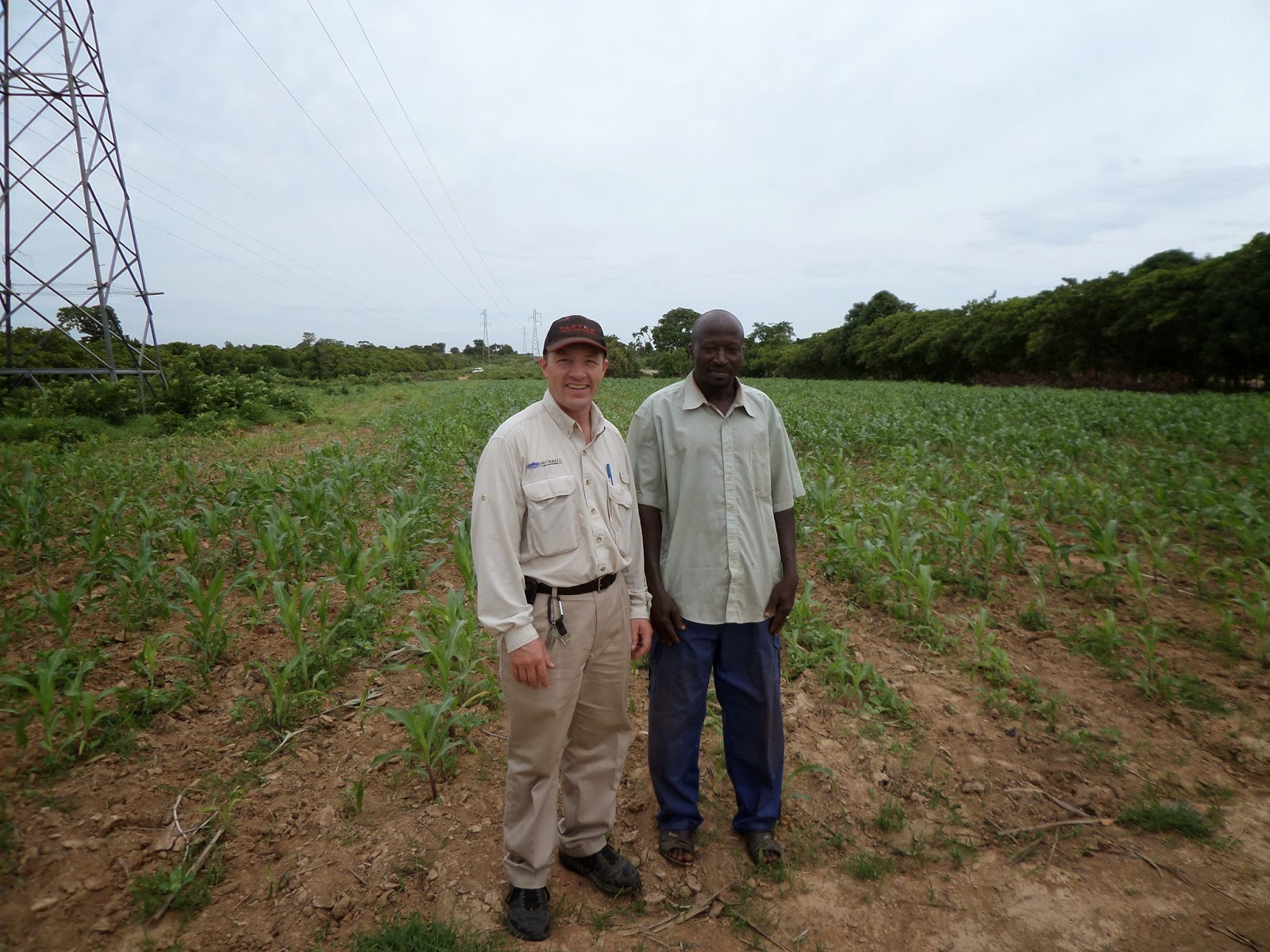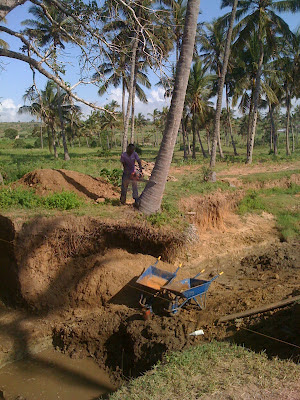On my first day in Mali with Anounou we went to visit a successful farmer near Selingue in southern Mali. He took us to see his corn fields. I was impressed with what I saw. Most of the rural farmers in Africa, that I have seen, plant a hill of five plants about a meter apart from each other. I am not sure where this technique originated and I have not been able to find out why they do it this way. The best answer that I have been able to get is, the five seeds are in case some of them don't germinate and the spacing is so that it is easier to get between the plants to weed when they get bigger
. This farmer planted his corn in rows with the proper spacing between rows and between plants, 60-80 cm between rows and 15 to 20 cm between plants in a row.
 |
| Looking at recently planted corn fields in Mali |
 |
| Rice fields ready to harvest near Selingue, Mali |
The farmer then took us to his rice farm near the Niger river. He was in the middle of harvesting the rice. These fields are flood irrigated from the river so they can grow rice all year around. Typically, they plant in July and harvest in December then plant again in January and harvest in June.
 |
| With added water almost any vegetable is grown in these gardens in Ouelessabougou |
In this community garden I saw a very wide variety of vegetables and herbs. Tomatoes, spinach, onion, kale, sweet potato, corn, beans, soybeans, and many others. The climate is very good for growing just about anything here. The challenge comes during the dry season when everything has to be watered by hand. This community garden has five hand dug wells.
 |
| The International Crops Research Institute for the Semi-Arid Tropics |
In Bamako we stopped at ICRISAT, The International Crops Research Institute for the Semi-Arid Tropics and met with Eva a sorghum scientist from Germany that works here to develop better varieties of sorghum and millet.
Mali has a climate that is conducive to growing a wide variety of produce, from cereal grains to soybeans to vegetables to fruits. With improved cultivation and processing techniques, Mali could produce plenty of food to meet the needs of her population and could export also. I look forward to using the Feed the World program to help the Ouelessabougou Alliance teach improved farming practices.





Comments
Post a Comment